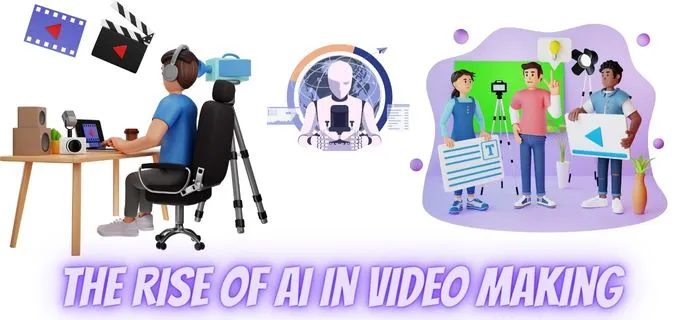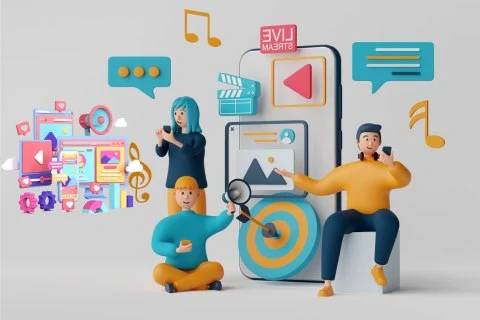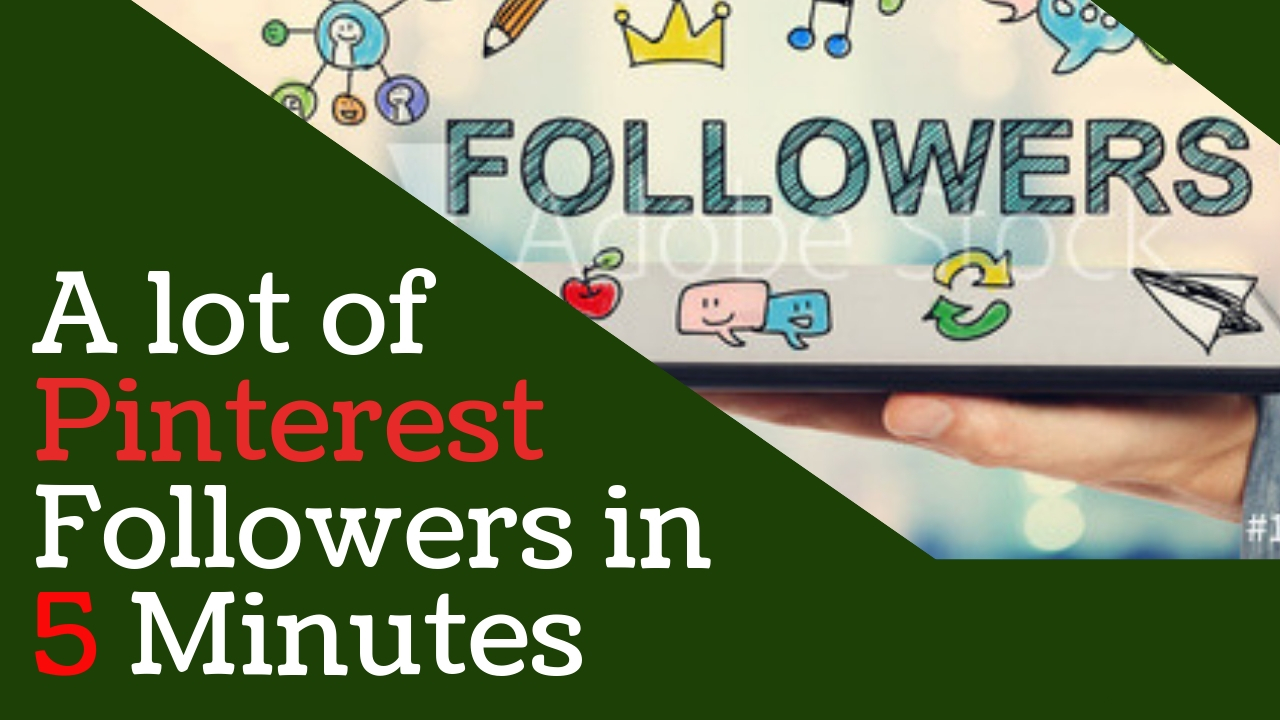
Because of the expanding influence of artificial intelligence (AI) and new technology, the world of video-making has undergone a fundamental upheaval in recent years. AI has emerged as a game changer, revolutionising video creation, editing, and production. The possibilities appear boundless, from automated editing tools to AI-driven visual effects.
Rise of AI in Video Making
AI has become an essential aspect of the video production process, providing producers with cutting-edge tools and methodologies. Tasks that were formerly time-consuming and labour-intensive can now be automated, allowing film creators to focus more on their creative vision. AI algorithms can analyse massive volumes of data, recognise trends, and generate important insights, resulting in better decision-making throughout the production process.
Technology’s transformational impact on video production cannot be understated. AI, machine learning, computer vision, and deep learning breakthroughs have made video production more accessible, efficient, and cost-effective. The use of AI technologies has not only streamlined standard operations but also created new opportunities for innovation and experimentation.
Furthermore, technological advancements have democratised video creation, enabling ambitious producers and independent filmmakers to create high-quality content with limited resources. The affordable availability of AI-powered tools and software has levelled the playing field, allowing content creators from all backgrounds to bring their thoughts to life on screen.
Understanding AI in Video Making
- AI, short for artificial intelligence, refers to the process of imbuing robots with human-like thinking and learning capabilities to simulate human intelligence. In the context of video production, AI refers to a set of technologies and algorithms. It allow robots to undertake jobs that were previously performed by people, including editing, visual effects, and content analysis.
- The use of algorithms and machine learning techniques in video production entails the analysis and processing of video data. The extraction of valuable insights, and the automation of various components of the production process. AI algorithms can analyse, analyse, and manipulate video footage by replicating human cognitive capacities. Resulting in increased efficiency and expanded creative possibilities.

Different types of AI technologies utilized in video making:
- AI-powered editing and post-production tools have revolutionised the post-production phase of video creation. Machine learning algorithms are used in these programmes to analyse footage, identify crucial moments, and automatically make edits based on predetermined styles or user preferences. They can expedite the editing process and deliver high-quality results quickly, allowing creators to concentrate on the artistic aspects of their work.
- AI-powered visual effects and computer-generated imagery (CGI): Artificial intelligence (AI) has considerably advanced the field of visual effects (VFX) and computer-generated imagery (CGI). Real-world footage can be analysed by machine learning algorithms to generate realistic visual effects such as virtual characters, environments, and simulations. AI-powered visual effects tools enable designers to create amazing and engaging visual experiences that were previously difficult and time-consuming.
- AI-powered smart cameras and cinematography support tools: AI-powered smart cameras and cinematography aid tools have streamlined the filming process. Computer vision and machine learning are used in these technologies to optimise camera settings, track subjects, and assist with framing and composition. Creators can create more precise shots and focus on achieving the desired visual narrative by automating key components of cinematography.
- Artificial intelligence (AI)-powered content analysis and recommendation systems: AI algorithms can analyse video footage, extract information, and deliver important insights to content providers and distributors. These systems are capable of analysing viewer behaviour, preferences, and interaction patterns in order to offer personalised content, optimise advertising techniques, and increase overall audience satisfaction. AI-powered content analysis also enables video content to be automatically tagged, categorise, and searchable, making it easier to manage and distribute.
AI in Post-Production
Post-production is critical in the fast-paced world of video production for refining and enhancing raw materials. The post-production process has seen great breakthroughs with the introduction of artificial intelligence (AI), making activities such as editing, colour grading, visual effects, and sound design more efficient and accessible than ever before. The rise of online video editors is a notable example of AI-powered post-production tools.
- Automated editing and colour grading techniques:
- AI-powered online video editors have revolutionised the editing scene. Machine learning algorithms are used in these applications to analyse footage, identify crucial moments, and suggest changes based on predetermined styles or user preferences. Creators may easily cut, reorganise, and assemble their films with a few clicks. Furthermore, AI-driven colour grading techniques allow for automatic colour correction, which improves the overall visual appeal of the movie while saving time.
- AI-powered visual effects and CGI advancements:
- The field of visual effects (VFX) and computer-generated imagery (CGI) has been transformed by artificial intelligence (AI). AI-enabled online video editors may easily integrate realistic visual effects into videos. AI algorithms analyse real-world footage and develop visually compelling effects ranging from adding virtual characters to constructing gorgeous settings. Creators may now create sophisticated and professional-grade VFX without substantial technical knowledge or costly software.
- Machine learning’s function in sound design and audio processing:
- AI-powered online video editors excel not only in aesthetic enhancements but also in sound design and audio processing. These technologies can analyze audio records, automatically eliminate background noise, adjust audio levels, and even propose appropriate sound effects using machine learning. Creators may provide a professional and engaging auditory experience to their viewers by streamlining the audio editing process.
Advantages of AI in Video Making
AI has resulted in considerable benefits and dramatic advances in the realm of video production. The influence of AI technology is revolutionizing the way videos are made and produced, from greater efficiency and productivity to enhanced creativity and accessibility.
Increased efficiency and productivity:
Time-consuming operations such as video editing, colour grading, and visual effects can be automated by AI-powered technologies. And decreasing human labour and freeing up crucial time for creators. With AI, video creators can improve their overall efficiency and productivity by streamlining their workflows, handling higher volumes of footage, and meeting tighter deadlines.
Cost-effectiveness and time-saving advantages:
AI technologies also provide considerable cost-effectiveness and time-saving advantages in video creation. AI minimises the need for considerable manual labour by automating numerous processes, which might result in lower production costs. Furthermore, AI-powered tools provide speedier turnaround times, allowing producers to deliver high-quality videos in less time. This not only saves time but also opens up the possibility of more projects and money generation.
Enhanced creativity and experimentation:
Increased creativity and experimentation: Artificial intelligence in video production opens up new options for increased creativity and experimentation. Creators can experiment with different editing techniques and explore creative visual effects with AI-powered tools and algorithms. AI can make creative recommendations based on predetermined styles or user preferences, sparking inspiration and pushing the limits of what is possible in video production. Creators may release their artistic creativity and create aesthetically attractive and engaging content by employing AI.
Improved accessibility and democratization of video production:
Another key benefit of AI in video production is increased accessibility and democratisation of the profession. AI-powered tools are becoming more affordable and user-friendly, making professional-level tools and approaches available to ambitious creators and indie filmmakers. This democratisation of video production enables the representation of a broader spectrum of voices and perspectives, boosting diversity and inclusivity in the business. AI is breaking down barriers and enabling people to realise their creative ambitions without the need for considerable resources or technical skills.
Future Trends and Possibilities
The increasing integration of AI and the rise of new technologies are entwined with the future of video making. These developments have the ability to reshape the business and open up new opportunities for both creators and audiences.
The continued integration of AI in video making:
AI will continue to play an important role in video production, with its incorporation growing more smooth and more complex. We should expect more sophisticated tools for automatic editing, greater visual effects, and advanced content analysis as AI algorithms improve and datasets rise.
Emerging technologies and their impact on the industry:
New technologies will have a significant impact on the future of video production. Virtual reality (VR), augmented reality (AR), and mixed reality (MR) are gaining traction, providing viewers with immersive and engaging experiences. various technologies will have an impact on video production processes, necessitating new approaches and specialised tools for the creation of content for various mediums.
Speculations on the future of AI-driven video production:
AI-powered video production is projected to grow more sophisticated and clever in the future. AI systems may be able to forecast audience preferences and modify information to them, allowing for personalised viewing experiences. We may see AI-powered virtual directors that can analyse texts, generate shooting recommendations, and collaborate with human filmmakers.
Conclusion
It is, nevertheless, critical to strike a balance between technology and human ingenuity. While AI has many advantages, it is the human touch that gives videos emotional depth and resonance. Collaboration between people and AI will be critical as we navigate the future of video creation, with humans giving the artistic vision and AI providing the tools to bring that vision to life.
Finally, AI has revolutionised the game in video production, providing producers with unparalleled capabilities. Video creators may expedite their workflows, boost their creativity, and deliver powerful videos to their audiences by embracing and exploring the possibilities of AI. The future of video production technology has exciting opportunities. And by combining the best of AI with human creativity, we can continue to push the boundaries of what is possible in the realm of video creation.











